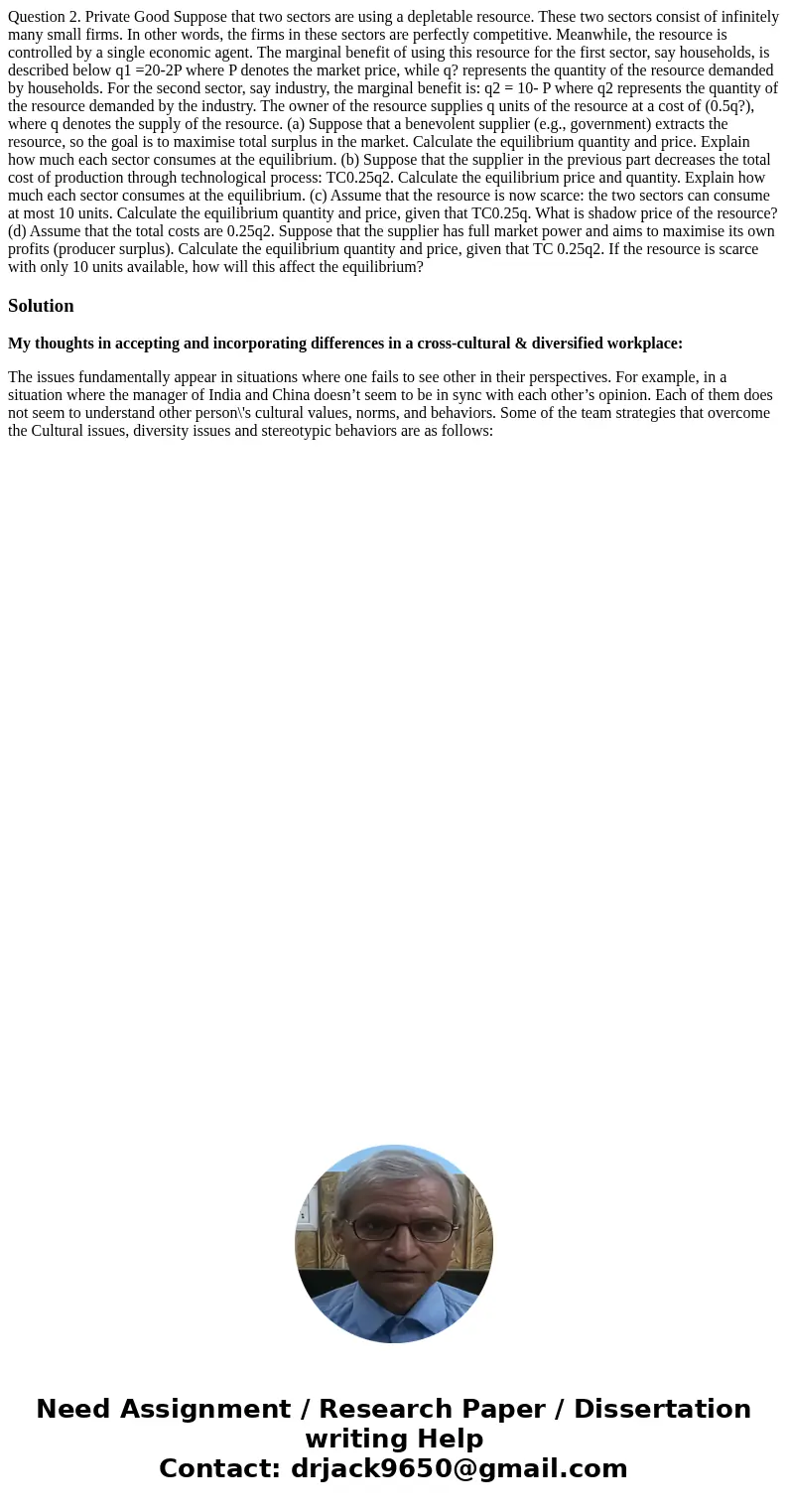Question 2 Private Good Suppose that two sectors are using a
Question 2. Private Good Suppose that two sectors are using a depletable resource. These two sectors consist of infinitely many small firms. In other words, the firms in these sectors are perfectly competitive. Meanwhile, the resource is controlled by a single economic agent. The marginal benefit of using this resource for the first sector, say households, is described below q1 =20-2P where P denotes the market price, while q? represents the quantity of the resource demanded by households. For the second sector, say industry, the marginal benefit is: q2 = 10- P where q2 represents the quantity of the resource demanded by the industry. The owner of the resource supplies q units of the resource at a cost of (0.5q?), where q denotes the supply of the resource. (a) Suppose that a benevolent supplier (e.g., government) extracts the resource, so the goal is to maximise total surplus in the market. Calculate the equilibrium quantity and price. Explain how much each sector consumes at the equilibrium. (b) Suppose that the supplier in the previous part decreases the total cost of production through technological process: TC0.25q2. Calculate the equilibrium price and quantity. Explain how much each sector consumes at the equilibrium. (c) Assume that the resource is now scarce: the two sectors can consume at most 10 units. Calculate the equilibrium quantity and price, given that TC0.25q. What is shadow price of the resource? (d) Assume that the total costs are 0.25q2. Suppose that the supplier has full market power and aims to maximise its own profits (producer surplus). Calculate the equilibrium quantity and price, given that TC 0.25q2. If the resource is scarce with only 10 units available, how will this affect the equilibrium? 
Solution
My thoughts in accepting and incorporating differences in a cross-cultural & diversified workplace:
The issues fundamentally appear in situations where one fails to see other in their perspectives. For example, in a situation where the manager of India and China doesn’t seem to be in sync with each other’s opinion. Each of them does not seem to understand other person\'s cultural values, norms, and behaviors. Some of the team strategies that overcome the Cultural issues, diversity issues and stereotypic behaviors are as follows:

 Homework Sourse
Homework Sourse